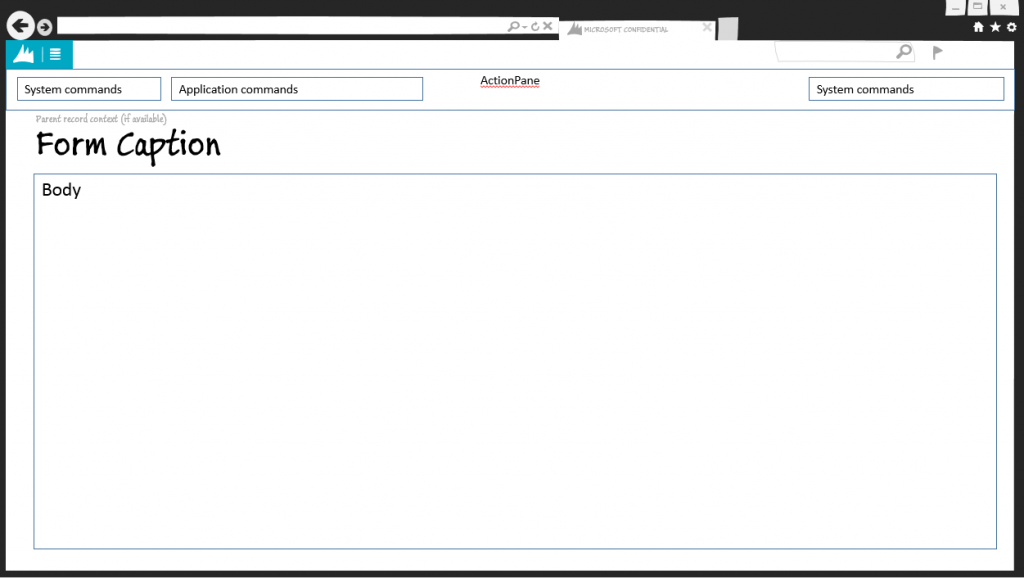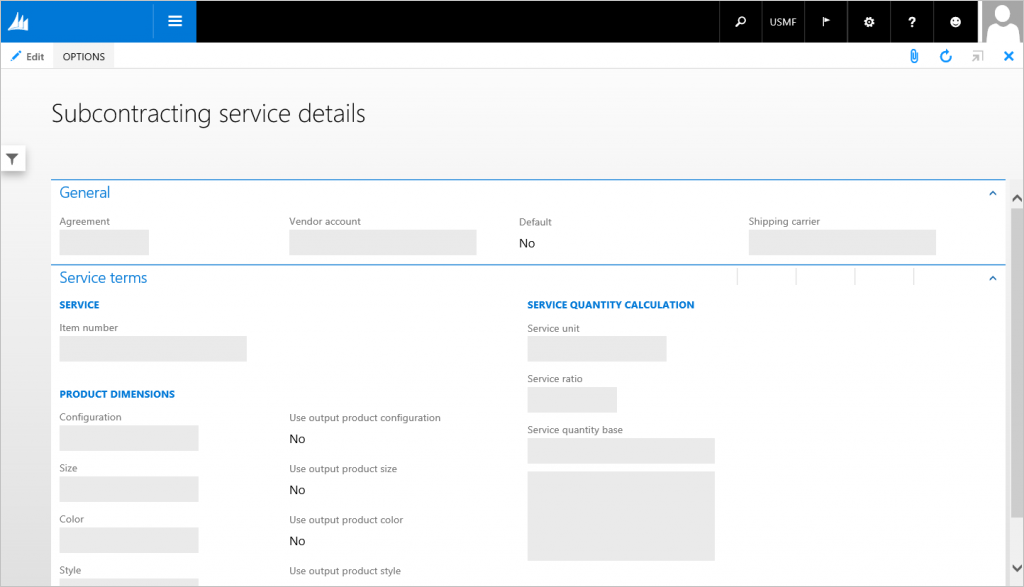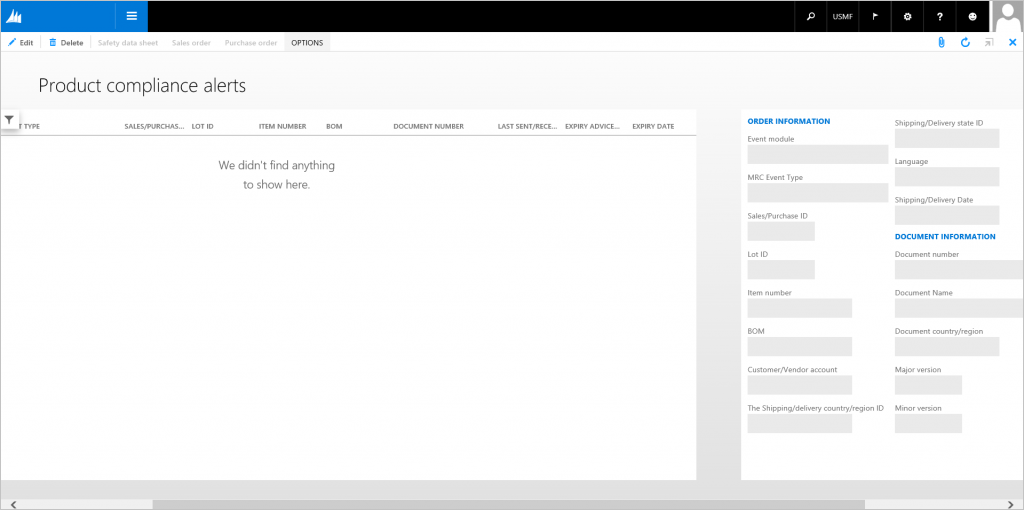Simple Details form pattern
This article describes the Simple Details form pattern. This pattern is used when only a simple set of fields must be presented to the user.
Usage
The Simple Details pattern is used when only a simple set of fields must be presented to the user. Examples include the display of totals and customer balances. Typically, view mode is used for the Simple Details pattern. However, in cases where the form provides editable information, the edit mode should be synced to the parent form. Four patterns are described in this document:
- Simple Details w/Toolbar and Fields – This is the basic Simple Details pattern, in which several fields are displayed in the form. The fields can optionally appear inside Groups.
- Simple Details w/Fast Tabs – This is the Simple Details pattern that should be used when fields are organized into FastTabs.
- Simple Details w/Standard Tabs – This is the Simple Details pattern that should be used when fields are organized into traditional tabs.
- Simple Details w/Panorama – This is the Simple Details pattern that should be used when information is intended to be displayed in a panorama format.
Wireframe
Pattern changes
There are no planned changes for the use of this pattern in the current version of Microsoft Dynamics AX.
Model
Simple Details w/Toolbar and Fields – High-level structure
Design
- ActionPane (ActionPane)
- Body (Group) – Note: A field subpattern is used.
Simple Details w/FastTabs – High-level structure
Design
ActionPane (ActionPane)
HeaderGroup (Group) [Optional]
Body (Tab, Style=FastTabs)
- BodyTabPages (TabPage repeats 1..N)
FooterGroup (Group) [Optional]
Simple Details w/Standard Tabs – High-level structure
Design
ActionPane (ActionPane)
HeaderGroup (Group) [Optional]
Body (Tab, Style=Tabs)
- BodyTabPages (TabPage repeats 1..N)
FooterGroup (Group) [Optional]
Simple Details w/Panorama – High-level structure
Design
ActionPane (ActionPane)
Body (Tab, Style=Panorama)
- BodyTabPages (TabPage repeats 1..N)
FooterGroup (Group) [Optional]
Core components
- Apply the SimpleDetails pattern on Form.Design.
- Address BP Warnings:
- Design.Caption isn't empty.
- The form must be referenced by at least one menu item.
- TabPage.Caption isn't empty.
- MainMenu must not contain menu items that reference a SimpleDetails form.
Commonly used subpatterns
UX guidelines
The verification checklist shows the steps for manually verifying that the form complies with UX guidelines. This checklist doesn't include any guidelines that will be enforced automatically through the development environment. Open the form in the browser, and walk through these steps. Standard form guidelines:
- Standard form guidelines have been consolidated into the Dynamics AX General Form Guidelines document.
Simple Details guidelines:
- The form page should display a Form Caption that accurately describes the entity.
- The Form Caption should be in a singular form.
Examples
Simple Details w/Toolbar and Fields
Form: AgreementLine
Simple Details w/FastTabs
Form: PlanActivityServiceDetails
Simple Details w/Standard Tabs
Form: HcmEmploymentDateManager (Click Human Resources > Common > Workers > Workers, click General > Versions > Employment History, and then click Date Manager.)
Simple Details w/Panorama
Form: PdsMRCEventTracker
Appendix
Frequently asked questions
This section will have answers to frequently asked questions that are related to this guideline/pattern.
Open issues
- Investigate whether Simple Details forms that show a small amount of related content should have a different presentation than a full-page form.




